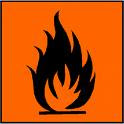Well, after some time away from any blogish activities, time to catch up with the writing... and to mark this occasion, I decided to show my most recent aquisition for the Jagermeister/Porsche ranks of my colection: the limited edition Fly Porsche 935 K3!This is also my very first item purchased in eBay. I registered my username on the very same day the auction ended! Frenetic last 3 hours, I must say. Even when I asked other eBay users to buy me some items, I always opted for the "Buy it now" guise, so I didn't knew quite much about bidding.
Gladly, all ended well, and so this pretty looking "mean machine" landed on my hands:
This is the beast that the great John Fitzpatrick raced at the Spa round of the 1980 DRM, finishing 2nd, according to "Racing Sports Cars Archive" (see here). That was the year I was born, and at that time (1st June 1980), I was yet to be 2 months old! Here's the photo taken from the Archives, that also decorates the box from this car:
 I'm not sure if it is a recurrence in all Jagermeister models from Fly, but the color on the model seems too saturated to match the real orange color. I think the color from the box does more justice to the real Jagermeister logo.
I'm not sure if it is a recurrence in all Jagermeister models from Fly, but the color on the model seems too saturated to match the real orange color. I think the color from the box does more justice to the real Jagermeister logo.
A quick look at the car details show that the model represents quite well the 935 K3, except for the metal-looking piece just under the main front air intake (seems like duct tape) that Fly missed... since this is a special and limited edition, I think they could have inserted it on their model.
As I mentioned above, I had to quickly register for eBay and grab this car. So , I kind of lost my head a bit with this car... well, I guess that it wasn't just me, even the poor driver lost his head too! Just check:
 Fortunately, the helmet is not lost, it just dropped to the passenger's side... so if you are reading this, don't worry, Mr. Fitzpatrick! I'll get the head fixed as soon as I open this one... :)
Fortunately, the helmet is not lost, it just dropped to the passenger's side... so if you are reading this, don't worry, Mr. Fitzpatrick! I'll get the head fixed as soon as I open this one... :)
Well, one more special boxed edition Jagermeister model to add to the collection... this is the 4th Porsche entering the shelve, to join its "cousins" 917/20, 934 and 956 KH. I'll leave you with some more pictures... see you soon!



Gladly, all ended well, and so this pretty looking "mean machine" landed on my hands:
This is the beast that the great John Fitzpatrick raced at the Spa round of the 1980 DRM, finishing 2nd, according to "Racing Sports Cars Archive" (see here). That was the year I was born, and at that time (1st June 1980), I was yet to be 2 months old! Here's the photo taken from the Archives, that also decorates the box from this car:
 I'm not sure if it is a recurrence in all Jagermeister models from Fly, but the color on the model seems too saturated to match the real orange color. I think the color from the box does more justice to the real Jagermeister logo.
I'm not sure if it is a recurrence in all Jagermeister models from Fly, but the color on the model seems too saturated to match the real orange color. I think the color from the box does more justice to the real Jagermeister logo.A quick look at the car details show that the model represents quite well the 935 K3, except for the metal-looking piece just under the main front air intake (seems like duct tape) that Fly missed... since this is a special and limited edition, I think they could have inserted it on their model.
As I mentioned above, I had to quickly register for eBay and grab this car. So , I kind of lost my head a bit with this car... well, I guess that it wasn't just me, even the poor driver lost his head too! Just check:
 Fortunately, the helmet is not lost, it just dropped to the passenger's side... so if you are reading this, don't worry, Mr. Fitzpatrick! I'll get the head fixed as soon as I open this one... :)
Fortunately, the helmet is not lost, it just dropped to the passenger's side... so if you are reading this, don't worry, Mr. Fitzpatrick! I'll get the head fixed as soon as I open this one... :)Well, one more special boxed edition Jagermeister model to add to the collection... this is the 4th Porsche entering the shelve, to join its "cousins" 917/20, 934 and 956 KH. I'll leave you with some more pictures... see you soon!





















































